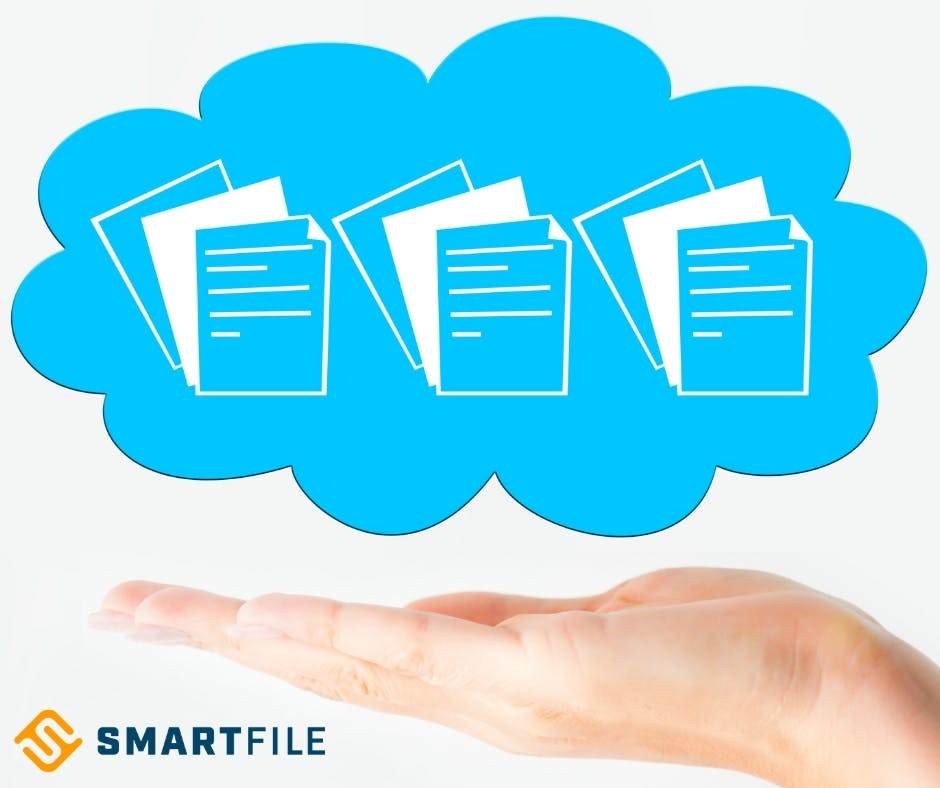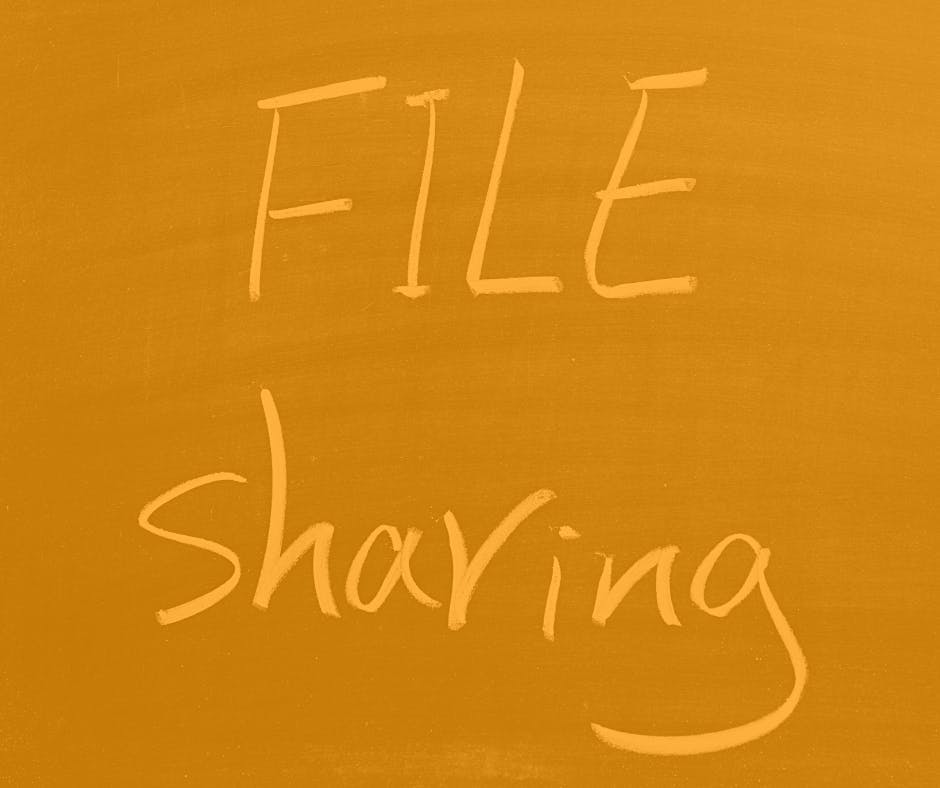In the current cyberthreat environment, there’s no such thing as being “too careful” when it comes to your organization’s most sensitive files. With that being said, in order for your employees to successfully complete everyday tasks, they need to be able to send and receive documents and files securely. For this reason, secure file transfer solutions have become increasingly essential—especially after cybercrime rose 600% due to the COVID-19 pandemic.
So, what’s all the confusion about? Well, the truth is, secure file transfer is a buzzword most IT professionals interpret in many different ways. The verbiage can range from “encrypted file sharing” to “confidential information transfers,” and so on. Despite the nuances of defining this term, several common misconceptions still exist in the industry that we think need a good debunking. Keep reading to learn the truth behind these six secure file transfer myths.
Myth #1: Every business-grade file sharing platform is secure

Not true. Just because a file sharing platform has the label “business-grade” doesn’t mean it’s the right choice for you and your enterprise. Some business-grade solutions don’t include key administrative features, such as activity monitoring and granular user permissions that are absolutely critical in today’s hybrid work environments.
Make sure you know what you’re getting when looking into secure file sharing. Understanding the different terminology is a good place to start because “business-grade” and “enterprise-grade” are two very different things.
While business-grade may sound effective, you want to look for that “enterprise-grade” label. This platform is typically going to be more robust and have a better go at keeping your files safe and secure. At SmartFile, we include features compliant with HIPAA regulations that healthcare organizations and contractors can use to ensure their assets are protected for the long haul.
We have a whole blog dedicated to the various reasons businesses should stop using consumer-grade platforms, but most times, all we need to say is this: the average data breach costs businesses around 4.2 million dollars. No one has time for that. According to IBM, it takes nearly 250 days to identify and contain a breach. Avoid the drama and scale your business with SmartFile’s professional security solutions.
Myth #2: All encryption is created equal
Nope. While most of today’s secure file transfer services boast encryption, the truth is that encryption comes in many different forms. Encryption is the method by which information is converted into secret code that hides the information’s true meaning. This is to keep your valuable information secure as it travels from place to place.
But some encryptions are more effective than others. Even if the encryption is said to be an Advanced Encryption System (AES—also known as the highest quality encryption available on the market), many services only offer in-transit encryption.
True security isn’t just encrypting a message from Point A to Point B—that’d be too easy. Effective and proactive encryption should include encryption in transit and at rest, especially for on-premises products. In the case of a data breach or hacker, the compromised files will most likely be at rest, thus needing encryption. If the box is accessed, the data is essentially unusable.
If your business wants to put more focus on compliance and security while mitigating overall risk, SmartFile’s FileHub offers the following security features that ensure your encryption is delivering unrivaled protection:
- Protects data that is “at rest”
- Encryption set up through a server, and the encryption card
- The power to delete encryption keys
- Ability to prove compliance
- The power to leave
- HP 440 card lets you connect to the HP ESKM (Enterprise Secure Key Management)
Myth #3: I only need secure file transfer if I deal with sensitive data

False. Contrary to popular belief, it isn’t just regulated industries like hospitals and banks that need to protect their information. Whether it’s personally identifiable information (PII), intellectual property, or company documents, the competitive environment of today’s world has called for increased information security.
Contracting with healthcare providers requires HIPAA compliance, and any PII should be protected. However, not all companies are operating in such a fashion, even though they should be.
Like it or not, your personal information is likely worth money—which today’s cybercriminals aren’t afraid to leverage. You may not think you’re dealing with personal or private information until that seemingly insignificant data falls into the hands of the wrong person.
Even something as inconspicuous as your phone number is an easy-to-find key that can be used by hackers and scammers to access your personal data. There are actually many different malicious ways cybercriminals can use things like your phone number and email to access your personal information.
Many people today are still under the impression that phones are not susceptible to hackers in the same way computers are, and this couldn’t be farther from the truth. While smartphones may not have been the main concern when they first became popular, they are now hackable.
In fact, in the United States alone, nearly 1.42% of all smartphone devices have been subject to a ransomware attack. Think about it this way: out of every 100 people you pass on the street, at least one of them has had a virus on their phone. Don’t become a part of this statistic!
Myth #4: I know all the programs my employee use to send information
Not likely. We hate to be the one to break it to you, but Shadow IT is a very real and growing problem. What exactly is Shadow IT, you ask? It’s described as the use of information technology systems, devices, software, applications, and services without permission from your IT department. This practice has grown substantially in recent years—particularly since the adoption of cloud-based applications and services.
Back in the day, technology commonly trickled down from businesses to consumers. Following the dot-com bubble burst, IT vendors switched their tactics from targeting businesses with new technology to targeting the growing consumer market. This trend is called IT consumerization, and it means that consumers started accessing this new technology before it had a chance to hit corporations.
As consumers started using this new technology at home, it’s only natural that they’d also want to bring these solutions into the workplace. Over time, the line between personal and business technology began to blur since many employees knew that their IT was likely to say “no” to these new apps and devices.
In a survey that asked IT departments what they expected the number of cloud services used by employees to be, they answered (average) 51. Much to their bewilderment, the actual answer was 730—15x more than expected.
This stat alone shows how great the disconnect is between IT, management, and employees when it comes to file storage and transfer. If IT can’t track where employees are storing files/who is accessing those files, then they have little to no hope of identifying or containing a data breach. You can’t expect your team members to simply not use the tools that make their lives easier. There are far too many benefits for them not to seek one out. This means you’ll want to give them all access to specific, sanctioned online tools that will work in your favor.
Myth #5: Email is just as secure

Also False. Email is not secure! While you can definitely go ahead and use it for company communication, a secure file transfer platform is the only way to go if you’ll be sending financial attachments or other sensitive documents. Especially since researchers have found that approximately 88% of all data breaches are caused by an employee error.
With the prevalence of data breaches and an increase in remote working environments, email can prove to be a loose thread in your security protocol. Most email is unencrypted, meaning hackers can intercept your information freely.
As Graham Cluley puts it:
“Email, by its very nature, is unsecure: 99.9% of it is sent unencrypted. If it was invented today, no one would use it. Emailing unencrypted documents ‘in the clear’ creates a potential chain of issues.”
It might seem like you’re doing everything right by using the latest and greatest version of Gmail or Outlook, but unfortunately, this just isn’t enough to protect against phishing scams and malware-infected attachments that exploit vulnerabilities in those programs! With such a high prevalence of employee error, the best way for a business to safeguard its sensitive information is to use a Secure File Transfer Platform (SFTP).
Myth #6: I don’t need a file transfer policy for my employees
You guessed it—debunked! Every company needs a file transfer policy. Employees should not be making subjective judgment calls on whether or not their communication includes sensitive information, especially since the average enterprise uses 76 distinct file sharing cloud services.
With all the applications and software being used—many of which are brought in by employees but never approved by administration—it is imperative that your organization has a policy. What tools are permitted for employees? Are there client documents that should never be sent using specific, low-security platforms? Most employees won’t be asking these questions, so it’s up to the administration and management to set these expectations.
Once you’ve set expectations, acknowledge that employees may not follow the policy. It’s up to you to educate employees on the well-founded reasons for your policy and give employees the tools to follow the policy effectively. One of these tools is an enterprise-grade secure file transfer platform.
Secure File Transfer With SmartFile
If you are unsure where to start when it comes to protecting your company’s most critical data, the seasoned professionals at SmartFile are here to offer a helping hand. We offer secure file sharing and transfer solutions for businesses and enterprises of all shapes and sizes. We can give you the tools you need to easily manage and share large file structures inside and outside of your business.
Our state-of-the-art features are the perfect blend of simplicity for users and control for IT. put the myths to rest and link up with a team of tech enthusiasts that are passionate about innovation and customer experience. Give us a call, and we’d be happy to assist in determining the policies and solutions that will work best for your organization. Whether it’s as simple as a cloud solution, or as robust as on-prem, we have the answer.
